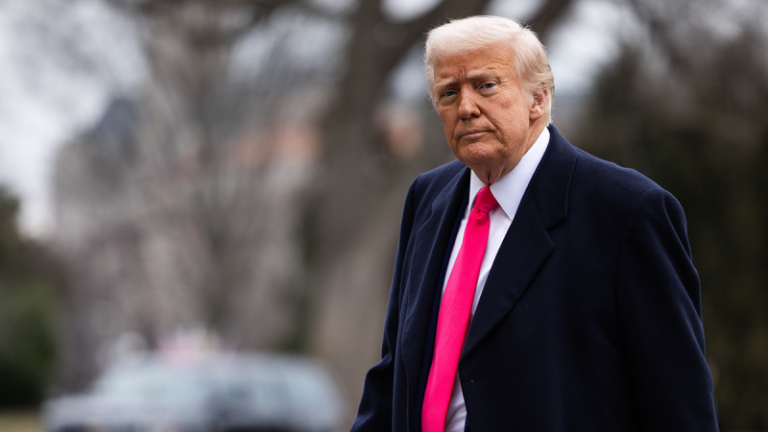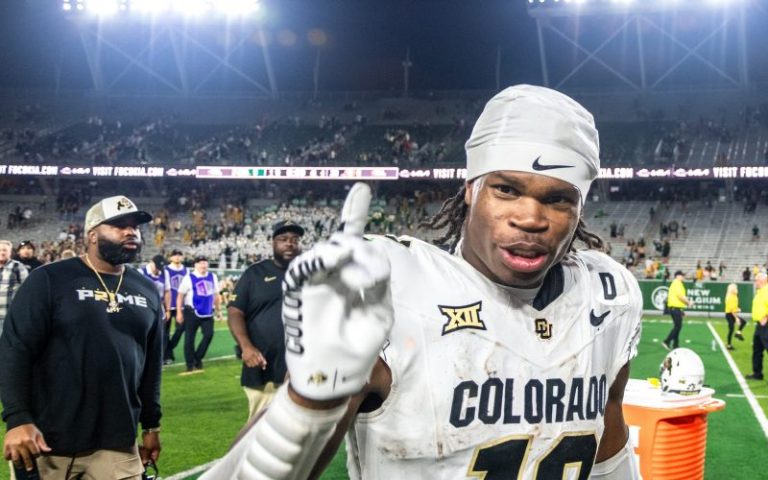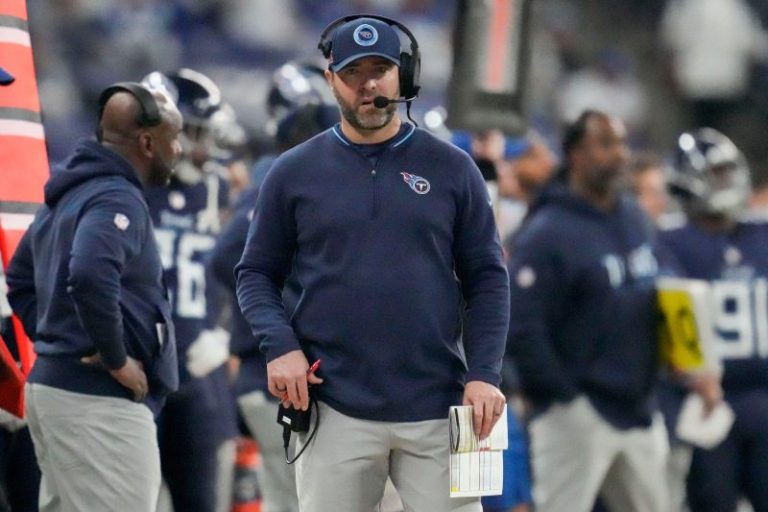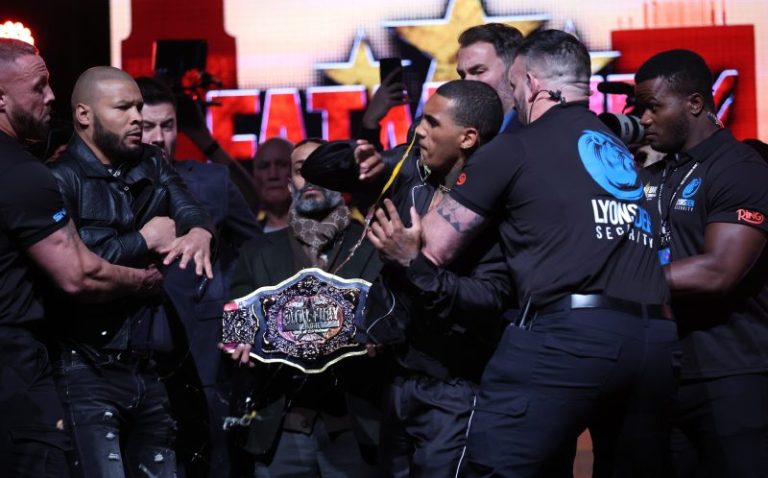The NFL scouting combine kicks off this week, but for teams, the majority of the work to evaluate players has already been completed.
For casual observers, the annual event in Indianapolis might serve as an introduction to some of the names that will come to define the next two months in the lead-up to the 2025 NFL draft. But the interviews, medical checks, testing and drills only serve as the finishing touches to the expansive looks that teams have already given to prospects. Still, there’s room for front offices and coaches to be swayed, so prospects will try to put their best foot forward when they hit the field at Lucas Oil Stadium.
Here are our pre-combine top 50 rankings for the 2025 NFL draft:
1. Travis Hunter, CB/WR, Colorado
Without hyperbole, football hasn’t seen a player like Hunter in quite some time. The Heisman Trophy winner was downright heroic in pulling double duty at cornerback and wide receiver, excelling at each spot despite a workload that would leave almost anyone else winded. While Hunter maintains he wants to keep that up, working primarily at one spot should serve not only his development but also assist with his stamina. His scintillating ball skills could make him a premier talent at either position, though cornerback seems to be the more reasonable attractive play for most teams at this point. He still has plenty to fine tune, but he’s one of the few legitimate game-breaking talents to come through the draft in recent years.
NFL STATS CENTRAL: The latest NFL scores, schedules, odds, stats and more.
2. Abdul Carter, DE, Penn State
If anyone else has a claim to the top spot at this point, it might be Carter. The 6-3, 250-pounder moved from linebacker to defensive end last season and unlocked something special. He gets off the line in an instant and slithers past blockers to close in on the ball carrier. Unlike many other edge rushers with his athleticism, he’s not afraid to get physical or work back inside. His bend and burst leave quarterbacks with little hope for escaping his clutches. As is typical for college edge rushers, he can improve with by expanding his set of pass-rush moves. But the overall package is that of an All-Pro talent.
3. Will Johnson, CB, Michigan
The comparisons to Pat Surtain II – the Denver Broncos cornerback and reigning NFL Defensive Player of the Year – are lofty but not outlandish. The 6-1, 203-pounder puts together the size, fluidity and instincts to handle any coverage assignment. Johnson isn’t a true burner and saw his 2024 season go sideways due to a toe injury, but he otherwise projects as a sticky corner who should could have excellent ball production.
4. Ashton Jeanty, RB, Boise State
As the debate about running back value rages on, Jeanty promises to be a fascinating litmus test. The Heisman Trophy runner-up strung together one of the most dominant seasons in college football history with 2,601 rushing yards and 29 touchdowns on the ground. A sublimely patient runner, he regularly slips past would-be tacklers in tight spaces and often manages to bounce off those who do make contact with him. The biggest thing holding his stock back might be the all-important question of how teams should properly invest at his position.
5. Cam Ward, QB, Miami (Fla.)
After backing out of his initial decision to declare for last year’s draft, Ward transferred to Miami and blossomed into college football’s most dynamic passer. The 6-2, 223-pounder dazzles with off-platform throws and operating out of structure. The biggest challenge for him, however, will be to take the easier gains in the short and intermediate areas rather than holding out for higher-difficulty throws that easily could become turnovers. Dialing back that mentality while still allowing Ward to embrace his playmaking streak could prove tricky for his future coaching staff, but his poise in the pocket and comfort working through his progressions should provide some level of assurance that he can grow in this area.
6. Tetairoa McMillan, WR, Arizona
The 6-5, 210-pounder has made a habit out of making the spectacular look routine. McMillan is content to pluck jump balls out of the air downfield, but he also thrives working underneath and immediately turning into a run-after-catch threat. Like many bigger receivers, he’ll face questions of whether he has the pure long speed to create separation downfield, but he has more than enough tools to overcome that potential shortcoming.
7. Tyler Warren, TE, Penn State
The Nittany Lions deployed the former high school quarterback creatively as the focal point of their offense, and it was easy to see why they did so. The 6-6, 261-pounder can do almost anything asked of him in the passing game, from hauling in contested catches to turning upfield and racking up yards after a quick throw. He has room to grow as a run blocker, but he has the disposition and skills to leave his imprint on every phase of the game.
8. Will Campbell, OT, LSU
Steadiness is the hallmark of three-year starter and consensus All-American’s play. Campbell stays composed and collected in pass protection, though he has some trouble with edge defenders comfortable working back inside. The 6-6, 320-pounder lacks ideal length for a blindside protector, but he should be a fixture of his future team’s offensive line, whether at tackle or guard.
9. Colston Loveland, TE, Michigan
A shoulder injury and shaky quarterback play obscured just what a threat Loveland can be as part of an NFL offense. The 6-5, 245-pounder should regularly create mismatches as an athletic target who is comfortable breaking free from slower defenders or boxing out smaller ones.
10. Mason Graham, DT, Michigan
As a square and squat interior disruptor, Graham will challenge some teams’ notions of what a defensive tackle should look like. But his ability to create havoc is readily evident, as he slips past guards thanks to his quick feet and crafty hand usage. He might not win in typical fashion for a defensive tackle and could need to generate a better bull rush, but he has several different answers for whatever offenses throw at him.
11. Josh Simmons, OT, Ohio State
His stock likely will be linked to his recovery from a season-ending knee injury he suffered in October. So long as teams are comfortable with his prognosis, however, the 6-5, 310-pounder checks many boxes of an upper-echelon pass protector, though he’s not as forceful as some of his blocking peers in this class.
12. Jalon Walker, LB, Georgia
At 6-2 and 245 pounds, he’ll require creative utilization from his future defensive coordinator, especially if he’s to be deployed off the edge. But his playmaking prowess is undeniable, as he can knife past blockers with his length and slippery style, and he’s a missile once he locks onto a ball carrier in space. He’s still developing as an off-ball linebacker, but he could become a major asset in coverage as well.
13. Walter Nolen, DT, Mississippi
The former No. 1 overall recruit didn’t fully find his form in his first two years at Texas A&M before transferring, but he broke out in his lone season in Oxford. Nolen excels at shooting the gap, though he’s also adept at pushing linemen backward. He’s too often guilty of taking himself out of plays with an overaggressive approach, but proper coaching should help him harness his attacking mentality.
14. Jahdae Barron, CB, Texas
The 5-11, 200-pounder probably won’t burn up the combine as one of the top athletes at his position. But in a game setting, the Thorpe Award winner has a preternatural sense for finding the football. He might not size up as a true outside corner to some, but he can be a versatile asset in coverage who thrives working downhill.
15. Armand Membou, OT, Missouri
At 6-3 and 322 pounds, he doesn’t look the part of a bookend tackle, and his frame could portend a move to guard. But Membou is equally comfortable pushing opponents around in the run game as he is keeping pass rushers at bay, though his build might leave him susceptible to being beaten by rangier defensive linemen.
16. Mike Green, DE/OLB, Marshall
The Football Bowl Subdivision leader in sacks (17 in 2024) employs a far more physical approach than one might expect from a 6-3, 251-pound edge rusher. He risks stalling out if he doesn’t continue to fill out his frame, but his relentless style and elasticity as a rusher should position him to make plenty of plays in the backfield.
17. James Pearce Jr., DE, Tennessee
His blistering initial burst off the line is often enough to give him a runway to the backfield, and he can leverage his rangy frame and formidable punch to take advantage of blockers who are thrown off balance by his speed. But it’s unclear whether he can hold up against the run and be an every-down defender, and his ability to finish off plays is still a concern.
18. Mykel Williams, DE, Georgia
Like Travon Walker before him, Williams represents a gamble on a package of outstanding traits that never coalesced into the fully dominant from many expected from him. The 6-5, 265-pounder can beat blockers in a variety of ways thanks to his rare combination of speed and power, though he likely will need to figure out additional moves for shedding opponents who do manage to lock in on him.
19. Tyler Booker, G, Alabama
There might not be a more powerful blocker in this year’s class, as the 6-5, 325-pounder looks to punish anyone in his path. He’s not the most fleet-footed lineman, but he should be coveted by any team looking to ramp up a physical rushing attack.
20. Derrick Harmon, DT, Oregon
Transferring from Michigan State paid off in a major way for Harmon, who had the most pressures of any interior defensive lineman last season with 55, according to Pro Football Focus. The 6-5, 310-pounder can create disruption from anywhere along the line, though his finishing touch is somewhat lacking.
21. Matthew Golden, WR, Texas
With Xavier Worthy and Adonai Mitchell off to the NFL, the Houston transfer stepped in and established himself as the Longhorns’ next standout pass-catching prospect. Golden enjoyed some of his best performances against top competition down the stretch in Texas’ College Football Playoff push. If he is able to beat press coverage consistently, he can challenge cornerbacks downfield with his acceleration or shake them on in- or out-breaking routes with his crisp footwork.
22. Jihaad Campbell, LB, Alabama
A former edge rusher, Campbell is still somewhat finding his way as an off-ball linebacker, as his recognition skills are underdeveloped. But a 6-3, 244-pound defender with extensive playmaking range, a proven track record as a blitzer and untapped coverage potential is the kind of project any defensive coordinator would gladly take on.
23. Shavon Revel Jr., CB, East Carolina
If not for a torn ACL suffered in September, he might be firmly entrenched as a first-rounder, as the 6-1, 188-pounder marries an ultra-competitive demeanor at the line of scrimmage with impressive recovery speed and improving ball skills. His health outlook will no doubt loom large in his evaluation, but if he can find the right fit with a defensive coordinator patient enough to bring him along – his style of play might make him prone to early penalties, and there will be a significant leap in quality of competition – he could be a highly productive starter.
24. Kelvin Banks, OT/G, Texas
The Outland Trophy winner is one of the more battle-tested prospects in this class after three years of starting experience. It remains to be seen whether teams will entrust the 6-4, 320-pounder to hang at tackle despite his suboptimal frame and balance, but he likely will still be highly valued even if he has to bump inside.
25. Emeka Egbuka, WR, Ohio State
The 6-1, 205-pounder is far from the most explosive pass catcher in this year’s class, but he routinely creates separation thanks to his savvy rather than his athleticism. He has an advanced feel for route-running and shedding coverage in tight quarters, which should help him become a fast favorite of his future quarterback as a high-volume underneath slot target.
26. Malaki Starks, S, Georgia
Starks has been a difference-maker ever since starting as a freshman in Athens, rising to the role of team leader for one of college football’s most dominant defenses. There are some volatile moments in coverage, as he too frequently takes the bait and can be shaken in man coverage by quicker receivers. But if he can iron out those issues, he could be a staple of any secondary as a versatile and heady playmaker.
27. Shedeur Sanders, QB, Colorado
Despite operating in a spotlight that might blind other passers, Sanders somehow managed to exceed outsized expectations by establishing himself as a precise and poised distributor. How he handles pressure at the next level could be one of the biggest determining factors in the trajectory of his career, but he could be a more than capable starter for an offense that asks him to conduct more often than create.
28. Luther Burden III, WR, Missouri
At a time when other receivers shined, his 2024 season went sideways, with the dynamic slot target averaging just 11.1 yards per game. Expanding his route tree in the pros could be the key to whether he remains primarily a threat on quick hitters underneath or becomes a more well-rounded target capable of threatening defenses downfield.
29. Shemar Stewart, DE, Texas A&M
There might not be a more imposing defensive prospect in this class than the 6-5, 281-pound edge rusher with a rapid burst off the line. Those impressive physical tools should allow Stewart to keep creating pressure consistently while helping shut down the run game, but it remains to be seen whether he can develop a reliable pass-rush plan and finishing touch after netting just 4 ½ sacks in college.
30. Kenneth Grant, DT, Michigan
Don’t pigeonhole the 6-3, 342-pounder as a mere space eater, even though he can command double teams and plug holes against the run. Grant is perhaps this class’ most athletic big man, though his nimble movements have yet to translate to much of anything in the pass rush.
31. Donovan Jackson, G, Ohio State
Shifting to left tackle during the Buckeyes’ title run helped highlight just how far the former five-star recruit has come in his career, as Jackson locked down an array of top-notch edge rushers. The 6-4, 320-pounder figures to move back inside at the next level, where his viselike grip should help him clamp down on defenders both in pass protection and the run game.
32. Nick Emmanwori, S, South Carolina
At 6-3 and 227 pounds with the speed of a cornerback, he seems perfectly suited to match up with tight ends and bigger receivers. Emmanwori is a bit wild when working downhill against the run and may lack the fluidity to stick in the slot, but his excellent ball skills and physical tools should prove plenty alluring to many teams.
33. Kaleb Johnson, RB, Iowa
Johnson single-handedly invigorated Iowa’s long dormant offense with his smooth running style, averaging 6.4 yards per carry. The 6-0, 225-pounder is patient yet decisive in his approach, snaking around would-be tacklers to find the open field. His limited comfort level in the passing game – particularly in protection – could box him in somewhat during the early portion of his career.
34. Donovan Ezeiruaku, DE/OLB, Boston College
After notching 16 ½ sacks last season, Ezeiruaku already seems to have a master’s degree in pass-rushing, as he has a full toolkit of moves he is prepared to wield at just the right moment. His 6-2, 247-pound build still will likely result in him being erased by bigger blockers, particularly in the run game, but he compensates for it by leveraging his length, agility and smarts.
35. Josh Conerly Jr., OT, Oregon
He ended up on the wrong end of a Senior Bowl viral highlight against Green, but that shouldn’t define Conerly’s pre-draft process. The 6-4, 315-pounder came into his own last season as a smooth mover, though he could be victimized by power rushers in the early going.
36. Landon Jackson, DE, Arkansas
The LSU transfer is the kind of player any offensive tackle hates to see lining up across from him, as the 6-7, 280-pounder boasts daunting length, an impressive arsenal of pass-rush moves and a never-say-die mentality. Jackson might be too big for his own good, however, as his rigidity severely limits him in several phases of the game.
37. TreVeyon Henderson, RB, Ohio State
Once he gets to the corner, watch out. The 5-10, 208-pounder can’t always fight his way through to daylight on inside runs, but Henderson has the burst to break long gains whenever he’s given a crease. Already a comfortable pass protector and reliable receiver, he should be a three-down option from Day 1.
38. Azareye’h Thomas, CB, Florida State
The Senior Bowl standout has given evaluators reason to go back and take a closer look at one of the few bright spots in a disappointing season for the Seminoles. The 6-1, 191-pounder has a strong claim to be the premier pest of this defensive class, as he regularly smothers receivers at the line of scrimmage with his length and hyperphysical approach. He might not generate a ton of plays on the ball and won’t be a fit for every scheme, but any team looking for an in-your-face coverage presence has to give him strong consideration.
39. Jack Sawyer, DE, Ohio State
One of the heroes of the Buckeyes’ title run, Sawyer is a pure punisher off the edge. It seems unlikely that he can diversify his pass rush beyond his current power-based approach, but he can overwhelm any blocker who lets up even momentarily, and he should be a force against the run.
40. Maxwell Hairston, CB, Kentucky
A 179-pound cornerback might be seen by some as a liability more than an asset at the line of scrimmage. While it remains to be seen whether Hairston can hold up against more physical receivers in the pros, he certainly has the disposition to hang with any wideout he finds himself across from, as he relishes working in close quarters.
41. Nic Scourton, DE, Texas A&M
The 6-4, 280-pounder can be a load for any lineman to handle, as he embraces contact with active hands, a high-energy approach and plenty of knowhow. Though his hustle and expansive set of pass-rush moves could take him a good distance, he might not have the upside of other edge rushers in the class given his mostly unremarkable physical traits.
42. Mason Taylor, TE, LSU
The son of Hall of Famer Jason Taylor has made a name for himself on the other side of the ball, proving to be a fluid pass catcher comfortable operating both in space and in traffic. He’s not as dynamic as the this year’s top tier of tight ends and is more likely to be a complementary piece than a go-to target, but he can still be a highly effective weapon for the right offense.
43. Jaxson Dart, QB, Mississippi
It’s hard to tell exactly what a team is getting in a signal-caller who feasted in a scheme that afforded him so many chunk gains off initial reads. But if he can hone his processing and clean up his footwork, Dart stands out as a particularly intriguing prospect to bring along slowly given his potential to beat defenses over the middle.
44. Xavier Watts, S, Notre Dame
With 13 interceptions over the last two seasons, the two-time consensus All-American – Notre Dame’s first since 1993 – has an unparalleled knack for finding the ball in coverage. Watts might not match other defensive backs in man coverage capabilities and versatility, but his instinctive style should translate to plenty more playmaking opportunities.
45. JT Tuimoloau, DE, Ohio State
His impact at the next level is likely to be measured more in pressures than sacks, but his disruption still comes in handy. The 6-5, 269-pound Tuimoloau lacks diversity as an edge rusher who relies almost entirely on his ability to push back opposing linemen, but his one trick is plenty good.
47. Grey Zabel, C, North Dakota State
After Graham Barton made the switch from collegiate left tackle to standout center as a rookie for the Tampa Bay Buccaneers, Zabel likely is looking at a similar trajectory. The 6-5, 318-pounder has experience at every other position along the line, but his superlative work at center during the Senior Bowl should have teams envisioning his long-term future there.
47. Tre Harris, WR, Mississippi
The 6-3, 210-pounder is far from a finished product as a pass catcher, with the overwhelming bulk of his experience coming on quick hits or deep shots. But his big-play ability downfield and after the catch should afford him a significant role early on even while he learns to become a more complete receiver.
48. Bradyn Swinson, DE, LSU
He hasn’t enjoyed the widespread recognition of some other edge rushers in this draft class, but that might soon change. The 6-4, 250-pounder is extremely explosive, with the speed-to-power move to jolt offensive linemen when he’s not simply dipping past them.
49. Carson Schwesinger, LB, UCLA
The walk-on who became an All-American is more than just a feel-good story. Schwesinger’s rapid recognition often enables him to find his way to the ball carrier faster than blockers can reach him, though he does have trouble disengaging opponents when they do beat him to the spot.
50. Omarion Hampton, RB, North Carolina
The 6-0, 220-pounder is perfectly content to run through defenders rather than around them, something he frequently did en route to racking up 30 rushing touchdowns over the last two years. Hampton might have to rely on that strength even more at the next level, however, as he isn’t elusive enough to force many missed tackles in the open field.
This post appeared first on USA TODAY










